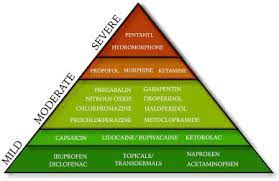Tramadol is an opioid analgesic (painkiller) prescribed when paracetamol and ibuprofen provide inadequate pain relief. Other opioid painkillers include codeine (not recommended in breastfeeding but see https://breastfeeding-and-medication.co.uk/fact-sheet/accidental-dose-of-codeine-when-breastfeeding ), dihydrocodeine ( see https://breastfeeding-and-medication.co.uk/fact-sheet/dihydrocodeine-and-breastfeeding) , oxycodone ( see Oxycodone and Breastfeeding – Breastfeeding and Medication) and morphine ( https://breastfeeding-and-medication.co.uk/fact-sheet/pain-relief-when-breastfeeding). All of these drugs can cause constipation so should be prescribed with a suitable laxative ( https://breastfeeding-and-medication.co.uk/fact-sheet/constipation-laxatives-and-breastfeeding) .
Brand name: Zydol®, Zamadol®
Tramadol is an opiate analgesic used for moderate to severe pain. It is subject to first pass metabolism which limits passage into milk. It has an elimination half-life of 6 hours. Tramadol inhibits the reuptake of noradrenaline and serotonin and may potentiate the action of other drugs with similar action e.g. SSRI anti-depressants.
Ilett et al. (2008) studied 75 breastfeeding mothers who were given 100 mg tramadol post-caesarian section on days 2 to 4. He collected milk and plasma samples of four or more doses to reflect steady state. Additionally, he observed the infants together with matched controls not exposed to tramadol. He determined a relative infant dose quoted as 2.24% for tramadol and 0.64% for its metabolite. No difference was noted in the behaviours of the infants exposed compared with the controls and the authors therefore concluded that short-term maternal use of tramadol is compatible with breastfeeding.
Tramadol is metabolized in the liver by enzyme cytochrome P450 isoenzyme 2D6 (CYP2D6). Some people have a variation of this enzyme that changes codeine to morphine and tramadol to M1 faster and to a greater extent than in other people. These individuals are called CYP2D6 ultra-rapid metabolizers. Just as in codeine this can produce an accumulation of the drug in breastmilk. This genotype is present in up to 10% of the white population in Europe and North America, but only 4% of black African Americans (FDA 2015).
As with other opiates, exposure of premature infants should be undertaken with caution because of the risk of apnoea and sedation.
The amount in breastmilk is probably too small to be harmful. The dose should be as low as possible for as short a period as possible as with all opioid medication and titrated down to paracetamol and NSAID once pain relief is adequate. Observe baby for drowsiness. If baby becomes drowsy stop drug immediately and seek medical advice.
References
- Ilett KF, Paech MJ, Page-Sharp M, Sy SK, Kristensen JH, Goy R, Chua S, Christmas T, Scott KL, Use of a sparse sampling study design to assess transfer of tramadol and its o-desmethyl metabolite into transitional breastmilk. Br J Clin Pharmacol, 2008;65(5):661–6
- Hale T, Krutsch K. Hale’s Medications & Mothers’ Milk 2025-2026

